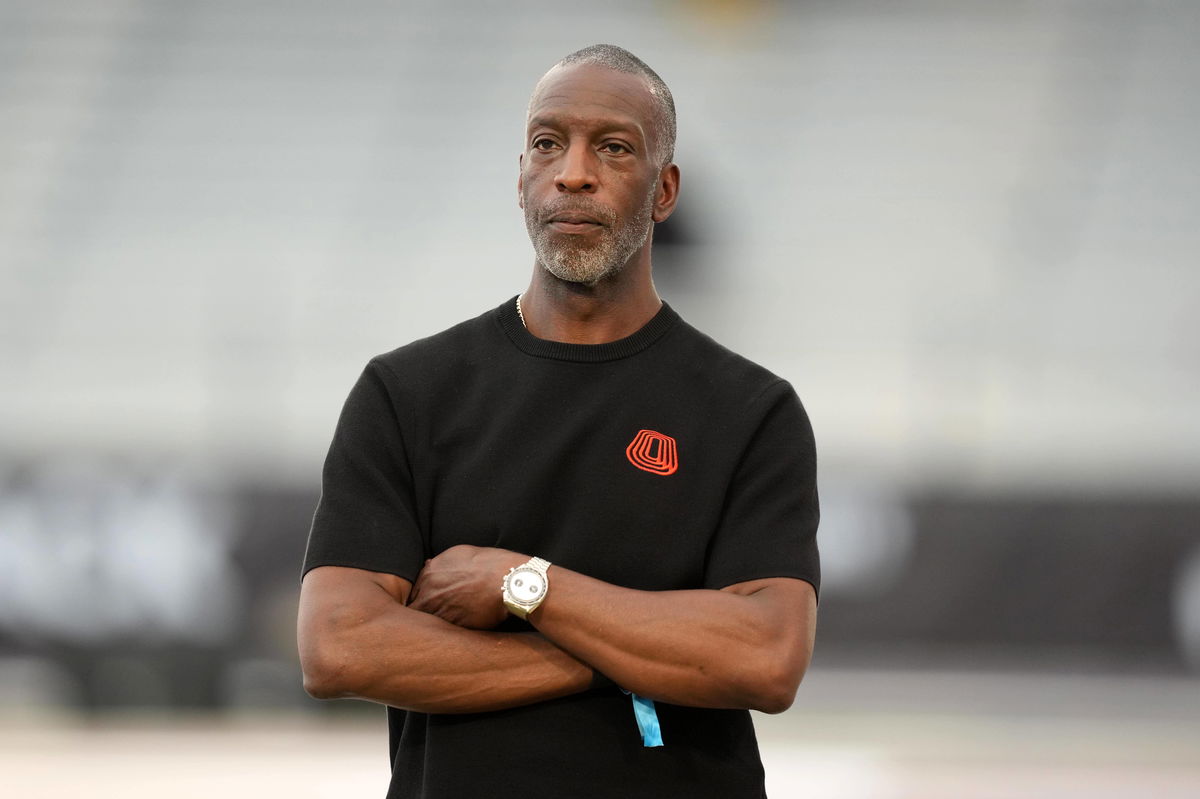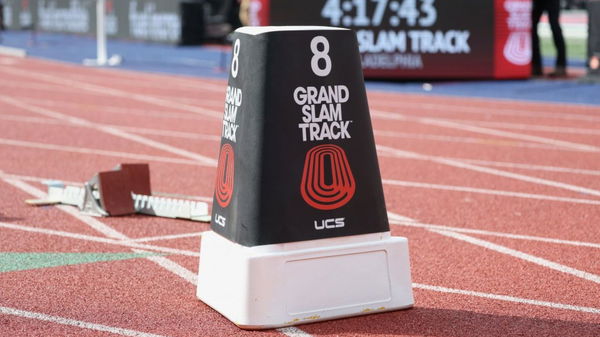
Imago
Track & Field: Grand Slam Track Miami May 3, 2025 Miramar, FL, USA Michael Johnson at the Grand Slam Track Miami at Ansin Sports Complex. Miramar Ansin Sports Complex Florida United States, EDITORIAL USE ONLY PUBLICATIONxINxGERxSUIxAUTxONLY Copyright: xKirbyxLeex 20250503_szo_al2_0116

Imago
Track & Field: Grand Slam Track Miami May 3, 2025 Miramar, FL, USA Michael Johnson at the Grand Slam Track Miami at Ansin Sports Complex. Miramar Ansin Sports Complex Florida United States, EDITORIAL USE ONLY PUBLICATIONxINxGERxSUIxAUTxONLY Copyright: xKirbyxLeex 20250503_szo_al2_0116
For years, track athletes have trained like professionals but often been paid like part-timers. That’s the gap Michael Johnson set out to fix with Grand Slam Track, a compact, high-stakes series built around fewer events, bigger prize money, and guaranteed support. Runners don’t just race; they show up knowing their travel is covered, their stories will be told, and a win could earn them $100,000 and a last position $8,000. But here within the Diamond League, tradition and legacy still dominated. In 2025, the series is to distribute a record $9.24 million in total prize money, with $500,000 per regular meet and $2.24 million at the final. Winners in standard events earn $10,000 at meets, rising to $30,000 at finals. A new “Diamond+” tier doubles pay, $20,000 for event winners at meetings and $50,000 at finals. Then what remains the problem? Well…
Watch What’s Trending Now!
During the first week of May this year, the Grand Slam Track Miami meet overlapped directly with the Diamond League’s Shanghai event on May 3. The dates clashed. And now, if you were a track and field athlete, where would you go? A league that offers you $100,000 or a league that offers you $10,000, mind it, the former one also offers something if you lose as well. Of course, the athletes would move. Michael Johnson was asked by Rodney Green if giving more money would create a rift between the GST and the Diamond League. He not only answered the question but also pointed out a big difference between the two.
“I get that. I get that. But I think these athletes deserve it, and we’re going to keep working for it. I think that’s what they deserve. And I think, you know, um, you know, we’ve proven that, you know, they do deserve it,” said Michael Johnson in the latest episode of Ready Set Go, aired on July 31. And if proof was needed, just look at Jacory Patterson. The 400m runner balanced grueling overnight shifts loading trucks for UPS (10:45 PM–4:00 AM), leaving him just ~3 hours of sleep before daily training. Despite this exhaustion, he smashed a 43.98s world‑leading 400 m in Miami 2025, earned 12 sprint points, finished second overall, and went home with $50,000 to his name.
ADVERTISEMENT
Johnson also added another layer to the difference between GST and the Diamond League, which was visibility. He then talked about how they landed at NBC while the Diamond League could not, and how it is because of such athletes. He said, “And when you get them together and they compete the way that we got them to compete and you story tell around that, you know, it creates a situation where you think about, you know, how were we able to get this on uh Peacock and the CW simultaneously in the US when the Diamond League went to Flow Track and couldn’t get back on NBC and people were disappointed, right?” NBC had previously held the rights since 2017 but opted not to renew, choosing instead to focus on Grand Slam Track, its new domestic league airing on Peacock and The CW.

Imago
Credit: X/@respective owner
The move drew significant backlash: fans and athletes criticized FloTrack’s high cost ($30/month or ~$150/year) versus Peacock’s lower fee ($5–6/month). But Johnson also left a good question: How did they do it? He answered it himself, saying, “Well, we were able to do that because we have the best athletes competing against each other.” Grand Slam Track’s inaugural season featured elite Olympic champions and world record holders like Sydney McLaughlin‑Levrone, Gabby Thomas, Fred Kerley, Kenny Bednarek, Grant Fisher, Masai Russell, etc, so a fair point from Johnson.
ADVERTISEMENT
Though debatable as well, since Diamond League had Noah Lyle making his debut, Sha’Carri Richardson racing her second race of the season, neither of the two appeared in the Grand Slam track, and they are the poster figures of the USA track and field.
ADVERTISEMENT
When the former Diamond League director called out Michael Johnson’s GST
In May, Former Zurich Diamond League director Patrick Magyar stirred controversy with a bold LinkedIn post titled “From Grand Slam to Grand Flop—A Lesson in What Not to Do with Athletics.” In it, he sharply criticized Michael Johnson’s Grand Slam Track, accusing it of sidelining key stakeholders, prioritizing flashy production over substance, and straying from the sport’s foundational values. The words inside the post were personal to the track and field legend’s brainchild.
The inaugural Grand Slam Track Meet didn’t go as planned since it was marked by low attendance, last-minute withdrawals, and other issues, making it a rough start. Digging into it, Patrick Magyar said, “If you disrespect half the track & field family… If it’s more about your ego than the sport… If you believe money alone rules athletics… Then what you create is not a vision. You create a Grand Flop.” That’s going to hurt.
Top Stories
Update Announced on Josh Allen’s Bills Staying Near Brown University Amid Tragic Incident

Michigan Football Receives Disappointing Kenny Dillingham News on Saturday

Forced to Leave FOX, Cowboys Legend Troy Aikman Says ESPN Is Like ‘U.S. Government’ & Clearly Distinguishes the Two Networks

Army vs Navy: Why is U.S. President Donald Trump Attending the Game?

Who are Fernando Mendoza’s Parents? All about Elsa Mendoza and Fernando Mendoza

$250M Michigan Booster Reveals More to Sherrone Moore Saga After Paige Shiver Confirms Police Visit

ADVERTISEMENT
Magyar didn’t sugarcoat his opinion of Grand Slam Track. He described the meet as “boring, lifeless, with long stretches of inactivity and—perhaps most telling—an empty stadium in Kingston, the capital of one of the world’s greatest track and field nations” While admitting he might be biased, having helped shape the Diamond League and led the prestigious Weltklasse Zürich, he stood by the numbers.
Magyar believes the Diamond League has thrived since 2010 because it offers “a complete version of track and field within a two-hour televised window.” His main point? “You can’t eliminate half the sport just to fit someone’s narrow idea of what sells.” As proof of the league’s staying power, he pointed to strong 2025 ticket sales, with some European meets already at or near capacity. Do you agree with his points?
ADVERTISEMENT
ADVERTISEMENT
ADVERTISEMENT

